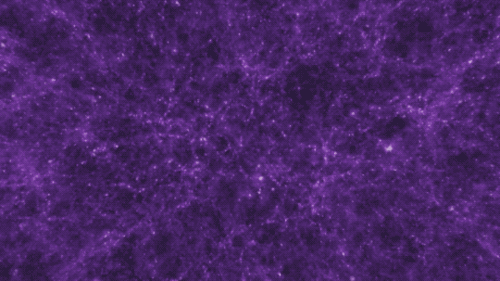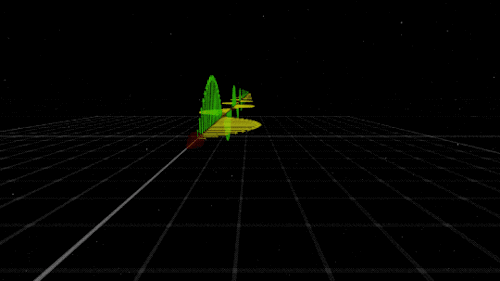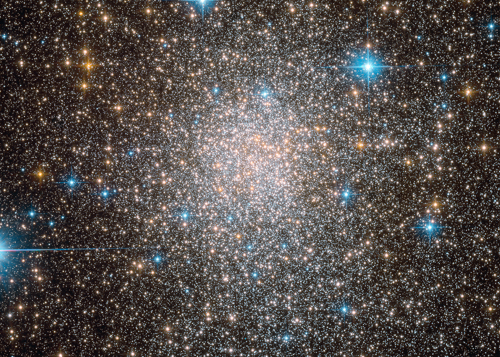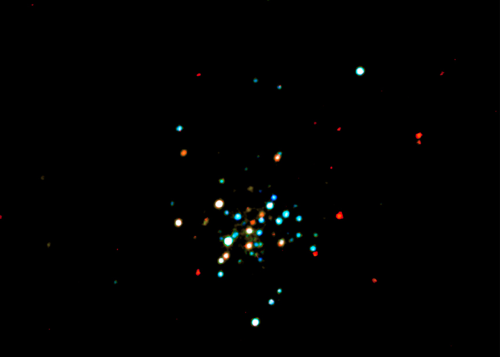Out Of The Lab And Into The Air
Out of the Lab and Into the Air
As we celebrate the 50th anniversary of the first Apollo Moon landing, remember that many Apollo astronauts, including Neil Armstrong, the first person on the Moon, were test pilots who flew experimental planes for NASA in our earliest days. Since long before we landed on the Moon, aeronautics has been a key piece of our mission.

The U.S. founded the National Advisory Committee on Aeronautics (NACA), our predecessor, in 1914. NACA, collaborating with the U.S. Air Force, pioneered the X-1 aircraft, the first crewed plane to achieve supersonic speeds. NACA was largely responsible for turning the slow, cloth-and-wood biplanes of the early 1900s into the sleek, powerful jets of today.
When NACA was absorbed by the newly formed NASA in 1958, we continued NACA’s mission, propelling American innovation in aviation. Today, our portfolio of aeronautics missions and new flight technologies is as robust as ever. Below are seven of our innovations flying out of the lab and into the air, getting you gate-to-gate safely and on time while transforming aviation into an economic engine!
1. X-59 QueSST

Our X-59 Quiet SuperSonic Technology (QueSST) flies faster than the speed of sound without the window-shattering sonic boom. This innovation may kick off a new generation of quiet, supersonic planes that can fly over land without disturbing those below. Once adopted, QueSST’s technologies could drastically reduce the time it takes to fly across the U.S. and even to other countries worldwide!
2. X-57 Maxwell

Our X-57 Maxwell will be the first all-electric X-plane, demonstrating the benefits distributed electric propulsion may have for future aviation. The Maxwell is named for Scottish physicist James Clerk Maxwell, who is known for his theories on electricity and electromagnetism. The name is also a play on words because, as X-57 engineer Nick Borer said, “It has the maximum number of propellers.”
3. Airborne Science

Our airborne science program provides Earth scientists and astrophysicists with the unique insights that can be gleaned from the air and above the clouds. By flying aircraft with Earth science instruments and advanced telescopes, we can gather high resolution data about our changing Earth and the stars above. Airborne science outreach specialist (and champion aerobatics pilot) Susan Bell highlights Fire Influence on Regional to Global Environments Experiment – Air Quality (FIREX-AQ), a joint mission with the National Oceanic and Atmospheric Administration (NOAA).
“FIREX-AQ will investigate the impact of wildfires and agricultural fires on air quality,” Susan said. “Living in the Western U.S., I witness firsthand the impact that smoke can have on the communities we live in and up in the air as a pilot.”
4. Search and Rescue

Our Search and Rescue (SAR) office serves as the technology development arm of the international satellite-aided search and rescue program, Cospas-Sarsat. Recently, the Federal Aviation Administration adopted SAR’s guidance regarding the testing and installation of the NASA-developed beacons required for planes. These recommendations will greatly improve aviation beacon performance and, ultimately, save more lives.
SAR developed the recommendations through crash test research at our Langley Research Center’s gantry in Hampton, Virginia, where Neil Armstrong and Buzz Aldrin trained for the Apollo Moon landing!
5. MADCAT

Our Mission Adaptive Digital Composite Aerostructure Technologies (MADCAT) team at our Ames Research Center in California’s Silicon Valley uses strong, lightweight carbon fiber composites to design airplane wings that can adapt on the fly. The composite materials are used to create “blocks,” modular units that can be arranged in repeating lattice patterns — the same crisscrossing patterns you might see in a garden fence!
6. RVLT

Our Revolutionary Vertical Lift Technology (RVLT) project leverages the agency’s aeronautics expertise to advance vertical flight capabilities in the U.S. The RVLT project helps design and test innovative new vehicle designs, like aircraft that can take off like a helicopter but fly like a plane. Additionally, the project uses computer models of the complex airflow surrounding whirring rotors to design vehicles that make less noise!
7. Moon to Mars

We’re with you when you fly — even on Mars! The 1958 law that established the agency charged us with solving the problems of flight within the atmosphere… but it didn’t say WHICH atmosphere. We’re applying our aeronautics expertise to the thin atmosphere of Mars, developing technologies that will enable flight on the Red Planet. In fact, a small, robotic helicopter will accompany the Mars 2020 rover, becoming the first heavier-than-air vehicle to fly on — err, above — Mars!
Make sure to follow us on Tumblr for your regular dose of space: http://nasa.tumblr.com.
More Posts from Nasa and Others
May the Four Forces Be With You!
May the force be with you? Much to learn you still have, padawan. In our universe it would be more appropriate to say, “May the four forces be with you.”

There are four fundamental forces that bind our universe and its building blocks together. Two of them are easy to spot — gravity keeps your feet on the ground while electromagnetism keeps your devices running. The other two are a little harder to see directly in everyday life, but without them, our universe would look a lot different!
Let’s explore these forces in a little more detail.
Gravity: Bringing the universe together

If you jump up, gravity brings you back down to Earth. It also keeps the solar system together … and our galaxy, and our local group of galaxies and our supercluster of galaxies.
Gravity pulls everything together. Everything, from the bright centers of the universe to the planets farthest from them. In fact, you (yes, you!) even exert a gravitational force on a galaxy far, far away. A tiny gravitational force, but a force nonetheless.

Credit: NASA and the Advanced Visualization Laboratory at the National Center for Supercomputing and B. O'Shea, M. Norman
Despite its well-known reputation, gravity is actually the weakest of the four forces. Its strength increases with the mass of the two objects involved. And its range is infinite, but the strength drops off as the square of the distance. If you and a friend measured your gravitational tug on each other and then doubled the distance between you, your new gravitational attraction would just be a quarter of what it was. So, you have to be really close together, or really big, or both, to exert a lot of gravity.
Even so, because its range is infinite, gravity is responsible for the formation of the largest structures in our universe! Planetary systems, galaxies and clusters of galaxies all formed because gravity brought them together.
Gravity truly surrounds us and binds us together.
Electromagnetism: Lighting the way

You know that shock you get on a dry day after shuffling across the carpet? The electricity that powers your television? The light that illuminates your room on a dark night? Those are all the work of electromagnetism. As the name implies, electromagnetism is the force that includes both electricity and magnetism.
Electromagnetism keeps electrons orbiting the nucleus at the center of atoms and allows chemical compounds to form (you know, the stuff that makes up us and everything around us). Electromagnetic waves are also known as light. Once started, an electromagnetic wave will travel at the speed of light until it interacts with something (like your eye) — so it will be there to light up the dark places.

Like gravity, electromagnetism works at infinite distances. And, also like gravity, the electromagnetic force between two objects falls as the square of their distance. However, unlike gravity, electromagnetism doesn't just attract. Whether it attracts or repels depends on the electric charge of the objects involved. Two negative charges or two positive charges repel each other; one of each, and they attract each other. Plus. Minus. A balance.
This is what happens with common household magnets. If you hold them with the same “poles” together, they resist each other. On the other hand, if you hold a magnet with opposite poles together — snap! — they’ll attract each other.
Electromagnetism might just explain the relationship between a certain scruffy-looking nerf-herder and a princess.
Strong Force: Building the building blocks

Credit: Lawrence Livermore National Laboratory
The strong force is where things get really small. So small, that you can’t see it at work directly. But don’t let your eyes deceive you. Despite acting only on short distances, the strong force holds together the building blocks of the atoms, which are, in turn, the building blocks of everything we see around us.
Like gravity, the strong force always attracts, but that’s really where their similarities end. As the name implies, the force is strong with the strong force. It is the strongest of the four forces. It brings together protons and neutrons to form the nucleus of atoms — it has to be stronger than electromagnetism to do it, since all those protons are positively charged. But not only that, the strong force holds together the quarks — even tinier particles — to form those very protons and neutrons.
However, the strong force only works on very, very, very small distances. How small? About the scale of a medium-sized atom’s nucleus. For those of you who like the numbers, that’s about 10-15 meters, or 0.000000000000001 meters. That’s about a hundred billion times smaller than the width of a human hair! Whew.
Its tiny scale is why you don’t directly see the strong force in your day-to-day life. Judge a force by its physical size, do you?
Weak Force: Keeping us in sunshine

If you thought it was hard to see the strong force, the weak force works on even smaller scales — 1,000 times smaller. But it, too, is extremely important for life as we know it. In fact, the weak force plays a key role in keeping our Sun shining.
But what does the weak force do? Well … that requires getting a little into the weeds of particle physics. Here goes nothing! We mentioned quarks earlier — these are tiny particles that, among other things, make up protons and neutrons. There are six types of quarks, but the two that make up protons and neutrons are called up and down quarks. The weak force changes one quark type into another. This causes neutrons to decay into protons (or the other way around) while releasing electrons and ghostly particles called neutrinos.
So for example, the weak force can turn a down quark in a neutron into an up quark, which will turn that neutron into a proton. If that neutron is in an atom’s nucleus, the electric charge of the nucleus changes. That tiny change turns the atom into a different element! Such reactions are happening all the time in our Sun, giving it the energy to shine.
The weak force might just help to keep you in the (sun)light.

All four of these forces run strong in the universe. They flow between all things and keep our universe in balance. Without them, we’d be doomed. But these forces will be with you. Always.
You can learn more about gravity from NASA’s Space Place and follow NASAUniverse on Twitter or Facebook to learn about some of the cool cosmic objects we study with light.
Make sure to follow us on Tumblr for your regular dose of space: http://nasa.tumblr.com

Roman's primary structure hangs from cables as it moves into the big clean room at NASA's Goddard Space Flight Center.
What Makes the Clean Room So Clean?
When you picture NASA’s most important creations, you probably think of a satellite, telescope, or maybe a rover. But what about the room they’re made in? Believe it or not, the room itself where these instruments are put together—a clean room—is pretty special.
A clean room is a space that protects technology from contamination. This is especially important when sending very sensitive items into space that even small particles could interfere with.
There are two main categories of contamination that we have to keep away from our instruments. The first is particulate contamination, like dust. The second is molecular contamination, which is more like oil or grease. Both types affect a telescope’s image quality, as well as the time it takes to capture imagery. Having too many particles on our instruments is like looking through a dirty window. A clean room makes for clean science!

Two technicians clean the floor of Goddard’s big clean room.
Our Goddard Space Flight Center in Greenbelt, Maryland has the largest clean room of its kind in the world. It’s as tall as an eight-story building and as wide as two basketball courts.
Goddard’s clean room has fewer than 3,000 micron-size particles per cubic meter of air. If you lined up all those tiny particles, they’d be no longer than a sesame seed. If those particles were the size of 16-inch (0.4-meter) inflatable beach balls, we’d find only 3,000 spread throughout the whole body of Mount Everest!

A clean room technician observes a sample under a microscope.
The clean room keeps out particles larger than five microns across, just seven percent of the width of an average human hair. It does this via special filters that remove around 99.97% of particles 0.3 microns and larger from incoming air. Six fans the size of school buses spin to keep air flowing and pressurize the room. Since the pressure inside is higher, the clean air keeps unclean air out when doors open.

A technician analyzes a sample under ultraviolet light.
In addition, anyone who enters must wear a “bunny suit” to keep their body particles away from the machinery. A bunny suit covers most of the person inside. Sometimes scientists have trouble recognizing each other while in the suits, but they do get to know each other’s mannerisms very well.

This illustration depicts the anatomy of a bunny suit, which covers clean room technicians from head to toe to protect sensitive technology.
The bunny suit is only the beginning: before putting it on, team members undergo a preparation routine involving a hairnet and an air shower. Fun fact – you’re not allowed to wear products like perfume, lotion, or deodorant. Even odors can transfer easily!

Six of Goddard’s clean room technicians (left to right: Daniel DaCosta, Jill Bender, Anne Martino, Leon Bailey, Frank D’Annunzio, and Josh Thomas).
It takes a lot of specialists to run Goddard’s clean room. There are 10 people on the Contamination Control Technician Team, 30 people on the Clean Room Engineering Team to cover all Goddard missions, and another 10 people on the Facilities Team to monitor the clean room itself. They check on its temperature, humidity, and particle counts.

A technician rinses critical hardware with isopropyl alcohol and separates the particulate and isopropyl alcohol to leave the particles on a membrane for microscopic analysis.
Besides the standard mopping and vacuuming, the team uses tools such as isopropyl alcohol, acetone, wipes, swabs, white light, and ultraviolet light. Plus, they have a particle monitor that uses a laser to measure air particle count and size.
The team keeping the clean room spotless plays an integral role in the success of NASA’s missions. So, the next time you have to clean your bedroom, consider yourself lucky that the stakes aren’t so high!
Make sure to follow us on Tumblr for your regular dose of space!
5 Things You Didn’t Know About Astronaut Shane Kimbrough!
After years of training NASA astronaut Shane Kimbrough is launching to the International Space Station on Wednesday, so there’s not much left to say, right? Wrong! Here are five secrets about his past that the Texas native and retired Army officer hasn’t told us, until now.
1. Shane went to elementary school in Germany

But his family returned to the U.S. where he attended middle and high school.
2. Life is Smyrna, Georgia

Shane attended middle and high school in the Atlanta suburb of Smyrna with movie star Julia Roberts!
3. Shane had an accomplished military career

A retired Army colonel, Shane graduated from West Point, after which he became an Army aviator. He later became a jumpmaster and has had a long and distinguished military career.
Read his bio.
4. He loves sports. All sports!

He LOVES playing, coaching and watching sports. Watching college football is one of the things he’ll miss while he’s on the station.
5. Leading the future

His passion for teaching is one that he finds “most rewarding.”
Follow Shane on the station at @astro_kimbrough.
Learn more about missions to the International Space Station HERE.
Make sure to follow us on Tumblr for your regular dose of space: http://nasa.tumblr.com

These three towers are only a small portion of the massive Eagle Nebula.
Known as the “Pillars of Creation,” the beautiful tendrils of cosmic dust and gas are giving birth to new stars, buried within their spires. This iconic image only shows a stretch of about four or five light-years … while the whole nebula itself spans about 70 by 55 light-years.
Learn more about Hubble’s celebration of Nebula November and see new nebula images, here.
You can also keep up with Hubble on Twitter, Instagram, Facebook, and Flickr!
Image credits: NASA, ESA and the Hubble Heritage Team (STScI/AURA)
What specific area of space research most excites you? Could be something being explored currently, or something you would like to see work done on in the future.
My twin sister worked on genetics in graduate school, and she continues to research ideas in genetics. She comes up with a lot of great ideas for what we can study in space, especially now since genetics is a focus on the space station. I’m looking forward to continuing with the genetics experiments and seeing what we learn.

It's almost launch day! On Monday, June 24, the launch window opens for the Department of Defense's Space Test Program-2 launch aboard a SpaceX Falcon Heavy. Among the two dozen satellites on board are four NASA payloads whose data will help us improve satellite design and performance.
Our experts will be live talking about the launch and NASA's missions starting this weekend.
🛰 Tune in on Sunday, June 23, at 12 p.m. EDT (9 a.m. PDT) for a live show diving into the technology behind our projects.
🚀 Watch coverage of the launch starting at 11 p.m. EDT (8 p.m. PDT) on Monday, June 24
Join us at nasa.gov/live, and get updates on the launch at blogs.nasa.gov/spacex.
Make sure to follow us on Tumblr for your regular dose of space: http://nasa.tumblr.com.

Launch Your Creativity with Space Crafts!
In honor of the completion of our Nancy Grace Roman Space Telescope’s spacecraft — the vehicle that will maneuver the observatory to its place in space and enable it to function once there — we’re bringing you a space craft you can complete at home! Join us for a journey across the cosmos, starting right in your own pantry.
Stardust Slime
Ingredients:
1 5 oz. bottle clear glue
½ tablespoon baking soda
Food coloring
1 tablespoon contact lens solution
1 tablespoon glitter
Directions:
Pour the glue into a bowl.
Mix in the baking soda.
Add food coloring (we recommend blue, purple, black, or a combination).
Add contact lens solution and use your hands to work it through the slime. It will initially be very sticky! You can add a little extra contact lens solution to make it firmer and less goopy.
Add glitter a teaspoon at a time, using as much or as little as you like!
Did you know that most of your household ingredients are made of stardust? And so are you! Nearly every naturally occurring element was forged by living or dying stars.
Take the baking soda in this slime recipe, for example. It’s made up of sodium, hydrogen, carbon, and oxygen. The hydrogen was made during the big bang, right at the start of the universe. But the other three elements were created by dying stars. So when you show your friends your space-y slime, you can tell them it’s literally made of stardust!
Still feeling crafty? Try your hand at more pantry projects or these 3D and paper spacecraft models. If you’re eager for a more advanced space craft, check out these embroidery creations for inspiration! Or if you’re ready for a break, take a virtual tour of an interactive version of the Roman Space Telescope here.
Make sure to follow us on Tumblr for your regular dose of space!
Stars, Sea, and Smoke from the ISS: Tournament Earth 2021
We started Tournament Earth with 32 photos taken by astronauts from the Interantional Space Station and now we are down to 8. All of the #1 seeds are gone. Two #8 seeds are dominating their groups. Who will win? Let's take a closer look at the competitors still in the game. Then remember to vote for your favorites. The champion will be announced on April 13, 2021.
Stars in Motion vs. Cleveland Volcano
This matchup pits smoke against stars, but both have interesting stories.

The International Space Station (ISS) is constantly in motion. For astronaut photographers on board, that motion has consequences. For one, it makes it challenging to take photos. The same motion makes it possible to shoot spectacular photos like the one above. The image is compiled from a series of photographs taken by astronaut Don Pettit while he was onboard the ISS in April 2012. This composite was made from more than 72 individual long-exposure photographs taken over several minutes as the ISS traveled over the Caribbean Sea, across South America, and over the South Atlantic Ocean.

Astronaut Jeff Williams was the first to witness activity at the Cleveland Volcano on May 3, 2006. The Cleveland Volcano is one of the most active in the Aleutian Islands, which extend west-southwest from the Alaska mainland. It is a stratovolcano composed of alternating layers of hardened lava, compacted volcanic ash, and volcanic rocks. The event proved to be short-lived; two hours later, the plume had completely detached from the volcano. The ash cloud height could have been as high as 6,000 meters (20,000 feet) above sea level.
Stargazing from the ISS vs. Cruising Past the Aurora Borealis
This is the most stellar matchup of the tournament, literally. Two beloved star pictures face off in what will be one of the most difficult choices of the tournament.

An astronaut took this broad, short-lens photograph of Earth’s night lights while looking out over the remote reaches of the central equatorial Pacific Ocean. The ISS was passing over the island nation of Kiribati at the time, about 2600 kilometers (1,600 miles) south of Hawaii. Scientists identified the pattern of stars in the photo as our Milky Way galaxy (looking toward its center). The dark patches are dense dust clouds in an inner spiral arm of our galaxy; such clouds can block our view of stars toward the center. The curvature of the Earth crosses the center of the image and is illuminated by a variety of airglow layers in orange, green, and red.

Commonly known as the northern lights, these colorful ribbons of light appear to dance in the sky over the planet’s high latitudes, attracting sky chasers and photographers. Astronaut Randy “Komrade” Bresnik shot this photograph on September 15, 2017, as the space station passed over Ontario, Canada. Curtains of green—the most familiar color of auroras—dominate the light show, with hints of purple and red.
Rolling Through the Appalachians vs. Castellanus Cloud Tower

The Susquehanna River cuts through the folds of the Valley-and-Ridge province of the Appalachian Mountains in this photograph taken from the International Space Station by astronaut Christina Koch. The Valley-and-Ridge province is a section of the larger Appalachian Mountain Belt between the Appalachian Plateau and the Blue Ridge physiographic provinces. The northeast-southwest trending ridges are composed of Early Paleozoic sedimentary rocks. The valleys between them were made of softer rocks (limestone and shales) that were more susceptible to erosion; they are now occupied by farms.

An astronaut aboard the International Space Station took this photograph of a massive vertical cloud formation—known to meteorologists as cumulus castellanus—above Andros Island. The cloud name castellanus comes from the similarity to the crenellated towers or turrets of medieval castles. These clouds develop due to strong vertical air movement typically associated with thunderstorms.
Lake Van, Turkey vs. Typhoon Maysak from the Space Station

While orbiting on the International Space Station, astronaut Kate Rubins shot this photograph of part of Lake Van in Turkey, the largest soda or alkaline lake on Earth. Generally, soda lakes are distinguished by high concentrations of carbonate species. Lake Van is an endorheic lake—it has no outlet, so its water disappears by evaporation—with a pH of 10 and high salinity levels.

This photograph of super typhoon Maysak was taken by European Space Agency astronaut Samantha Cristoforetti as the International Space Station passed near the storm on March 31, 2015. The category 4 typhoon was headed for a possible landfall in the Philippines by the end of the week. It was unusual for the western Pacific to see such a strong storm so early in the year.
See all of the images and vote HERE. Follow @NASAEarth on social media for updates.
Make sure to follow us on Tumblr for your regular dose of space: http://nasa.tumblr.com
Hi!! I’m a high school sophomore and I love the work NASA does! I’ve always wondered, what’s an astronaut’s first thought when leaving earth? What kind of experiences do you leave the expedition with? Thanks! :) - Lauren


Even star systems have identity crises. 🤷 According to data from observatories like our @nasachandraxray, a double star system has been rapidly flipping between two alter egos: a low-mass X-ray binary and a millisecond pulsar. Astronomers found this volatile double system in a dense collection of stars known as Terzan 5. The first image from @NASAHubble shows Terzan 5 in optical light. Swipe to see the new image where low, medium and high-energy X-rays detected by Chandra are colored red, green and blue respectively. Click the link in bio for more.
Make sure to follow us on Tumblr for your regular dose of space: http://nasa.tumblr.com
-
 sleekone4u2 reblogged this · 2 years ago
sleekone4u2 reblogged this · 2 years ago -
 masallev liked this · 4 years ago
masallev liked this · 4 years ago -
 katkatomba liked this · 4 years ago
katkatomba liked this · 4 years ago -
 obstreperousof reblogged this · 4 years ago
obstreperousof reblogged this · 4 years ago -
 obstreperousof liked this · 4 years ago
obstreperousof liked this · 4 years ago -
 anxvu reblogged this · 4 years ago
anxvu reblogged this · 4 years ago -
 anxvu liked this · 4 years ago
anxvu liked this · 4 years ago -
 scififan1963 reblogged this · 4 years ago
scififan1963 reblogged this · 4 years ago -
 scififan1963 liked this · 4 years ago
scififan1963 liked this · 4 years ago -
 elainenasa liked this · 4 years ago
elainenasa liked this · 4 years ago -
 robyn-goodfellowe liked this · 4 years ago
robyn-goodfellowe liked this · 4 years ago -
 itstrashyfashion reblogged this · 4 years ago
itstrashyfashion reblogged this · 4 years ago -
 moodychula liked this · 4 years ago
moodychula liked this · 4 years ago -
 vicepinto-blog reblogged this · 5 years ago
vicepinto-blog reblogged this · 5 years ago -
 karchuckles liked this · 5 years ago
karchuckles liked this · 5 years ago -
 poroussoul liked this · 5 years ago
poroussoul liked this · 5 years ago -
 adsoos reblogged this · 5 years ago
adsoos reblogged this · 5 years ago -
 adsoos liked this · 5 years ago
adsoos liked this · 5 years ago -
 worldart1 reblogged this · 5 years ago
worldart1 reblogged this · 5 years ago -
 earledmonds-blog liked this · 5 years ago
earledmonds-blog liked this · 5 years ago -
 thisishanatrying liked this · 5 years ago
thisishanatrying liked this · 5 years ago -
 ya-oryol liked this · 5 years ago
ya-oryol liked this · 5 years ago -
 slumbermude-blog liked this · 5 years ago
slumbermude-blog liked this · 5 years ago -
 techsocialnetwork reblogged this · 5 years ago
techsocialnetwork reblogged this · 5 years ago -
 worldinmywindow2 liked this · 5 years ago
worldinmywindow2 liked this · 5 years ago -
 fellowitch liked this · 5 years ago
fellowitch liked this · 5 years ago -
 techsocialnetwork liked this · 5 years ago
techsocialnetwork liked this · 5 years ago
Explore the universe and discover our home planet with the official NASA Tumblr account
1K posts